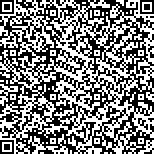| 引用本文: | 王磊,冯玲,王旭东,苗瑞,刘紫文.二级出水残留有机物对PVDF超滤膜污染行为研究[J].哈尔滨工业大学学报,2014,46(4):105.DOI:10.11918/j.issn.0367-6234.2014.04.018 |
| WANG Lei,FENG Ling,WANG Xudong,MIAO Rui,LIU Ziwen.Fouling behavior of residual organic matters of secondary effluent on PVDF UF membrane[J].Journal of Harbin Institute of Technology,2014,46(4):105.DOI:10.11918/j.issn.0367-6234.2014.04.018 |
|
| 摘要: |
| 为进一步识别二级处理水中残留有机物对聚偏氟乙烯(PVDF)超滤膜的优势污染物,采用DAX-8/XAD-4树脂将二级出水残留有机物分割成强疏水性、弱疏水性和亲水性组分,分别进行膜污染实验;使用原子力显微镜结合自制的PVDF膜材料探针和相应组分的污染物探针分别进行膜-污染物、污染物-污染物之间的黏附力测试,同时进行污染膜表面形貌分析.结果表明:使用微观作用力可有效预测膜污染行为;亲水性有机物与PVDF膜之间的作用力最大,弱疏水性有机物与PVDF膜之间的作用力最小;针对同一组分污染物,膜-污染物之间的作用力皆大于相应污染物-污染物之间的作用力,表明膜-污染物之间的作用力是控制PVDF超滤膜污染的关键因素,强疏水性组分之间的作用力是控制PVDF分离膜运行稳定期膜污染的关键因素;对二级处理水而言,减小亲水性组分与PVDF之间的作用力是控制PVDF超滤膜污染的重要手段. |
| 关键词: 膜污染 原子力显微镜 微颗粒探针 聚偏氟乙烯超滤膜 |
| DOI:10.11918/j.issn.0367-6234.2014.04.018 |
| 分类号:TU991.21 |
| 基金项目:国家自然科学基金资助项目(8,8);陕西省科技统筹创新工程计划项目(2012KTCL03-6,3KTCL03-16);陕西省教育厅专项基金(2013JK0884). |
|
| Fouling behavior of residual organic matters of secondary effluent on PVDF UF membrane |
|
WANG Lei, FENG Ling, WANG Xudong, MIAO Rui, LIU Ziwen
|
|
(School of Environmental and Municipal Engineering, Xi’an University of Architecture and Technology, 710055 Xi’an,China)
|
| Abstract: |
| To further identify the dominant pollutant of PVDF UF membrane, the secondary wastewater effluent organic matters were isolated into strongly hydrophobic acids, weakly hydrophobic acids and hydrophilic matter by DAX-8/XAD-4 synthetic resins and then the filtration tests were conducted with each constituent. The membrane-foulant and foulant-foulant interaction forces were measured with homemade PVDF micro-particle probes and the corresponding foulant-coated probes respectively with atomic force microscopy, as well as membrane morphology. The results showed that the microscopic force could effectively predict membrane fouling behavior. Adhesion between hydrophilic matter and PVDF membrane was the biggest, whereas adhesion between weakly hydrophobic acids and PVDF membrane was the smallest. The membrane-foulant force was bigger than the foulant-foulant force, illustrating that membrane-foulant force was the key factor to control the fouling behavior of PVDF UF membrane, and an effective mean to control PVDF UF membrane fouling was to reduce the force between the hydrophilic matter and PVDF membrane. |
| Key words: membrane fouling atomic force microscopy micro-particle probe PVDF ultrafiltration membrane |







